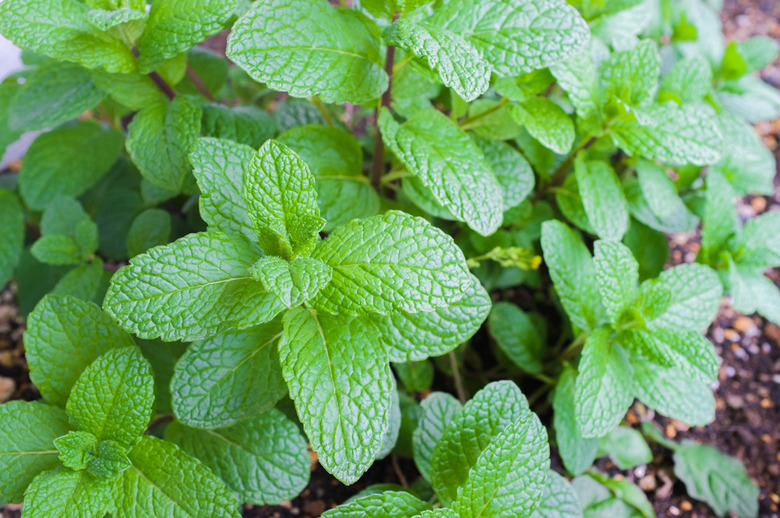Mint Leaves Are Turning Yellow
Fragrant and flavorful, mint (Mentha spp.) is a hardy perennial herb that often thrives with little care, so when mint leaves are turning yellow, you're left wondering what went wrong. Common culprits include improper watering, diseases and pests. Many of the causes can be corrected if you take action quickly. When growing mint in your flower or vegetable garden, providing ideal growing conditions and managing pest infestations immediately can help keep leaves green and healthy.
Overwatering Mint Plants
Overwatering Mint Plants
One common cause of yellowing mint leaves is too much water. Mint plants need consistent moisture, but too much water in the soil can cause problems, including root rot and other fungal issues. If you think you've overwatered, simply cut back.
Choosing a spot with well-draining soil helps prevent overly moist soil due to water retention. Amend the soil to help it drain well, especially if you have clay soil. Mint plants need about 1 inch of water each week, including rain and irrigation. A rain gauge helps you track rainfall to determine when you need to irrigate. The soil should be moist without being overly saturated with water.
Verticillium Wilt Fungus
Verticillium Wilt Fungus
Verticillium wilt is a fungal disease that can cause yellowing of mint leaves. The discoloring usually starts at the margin of the leaf, which, over time, curls and dies.
Rotating your plants can help prevent verticillium wilt. Avoid overusing fertilizer, which can contribute to the problem. Once a plant has verticillium wilt, remove and destroy it to prevent the disease from spreading to other mint plants in the area.
Mint Rust Fungus
Mint Rust Fungus
If you notice yellowing on the underside of the leaves, you could be dealing with the mint rust fungus. The spots are usually raised and might look yellow, brown or bright orange with a dusty look. Mint rust can also cause leaf tissue to die or can make the leaves fall off the mint plant. When new mint shoots grow, they're often pale or distorted.
The best way to control mint rust is to get rid of the infected plants and rhizomes. You can also dig up the healthy plants and move them to a different area, or put them in a pot to avoid exposure. To prevent mint rust, keep the leaves dry by not watering the plants from above. Watering your mint plants earlier allows the leaves more time to dry throughout the day if they get wet.
Yellow Mint Leaves From Aphids
Yellow Mint Leaves From Aphids
An aphid infestation can cause mint leaves to turn yellow and can also stunt the growth of leaves or cause them to curl. Aphids — small, soft-bodied insects that are often green, yellow or black — feed on the leaves and usually gather on the leaf bottoms and stems. They can also excrete honeydew, a sticky substance that eventually causes sooty mold to grow on your mint.
A small aphid infestation on a strong, established mint plant can often be handled with a spray of water from your garden hose or by pruning the infected parts of the mint plant. Using insecticidal soap to treat an aphid problem is a less-toxic approach than spraying harsh chemicals to controlling these pests and many other insects. You might need to reapply the soap weekly to take care of the issue completely.
Spider Mite Infestation
Spider Mite Infestation
Another potential cause of yellow leaves on mint is the spider mite. Since they love dusty conditions, these pests are more likely to appear under dry conditions when your mint plants are water-stressed. They look like little moving dots and often create webs on the leaves. Spider mites can cause yellow stippling on the leaves and sometimes shedding of the yellow leaves.
Like aphids, spider mites are often easy to control with a spray of water. For larger infestations, using insecticidal soap according to the package directions can help get rid of these unwanted visitors.
